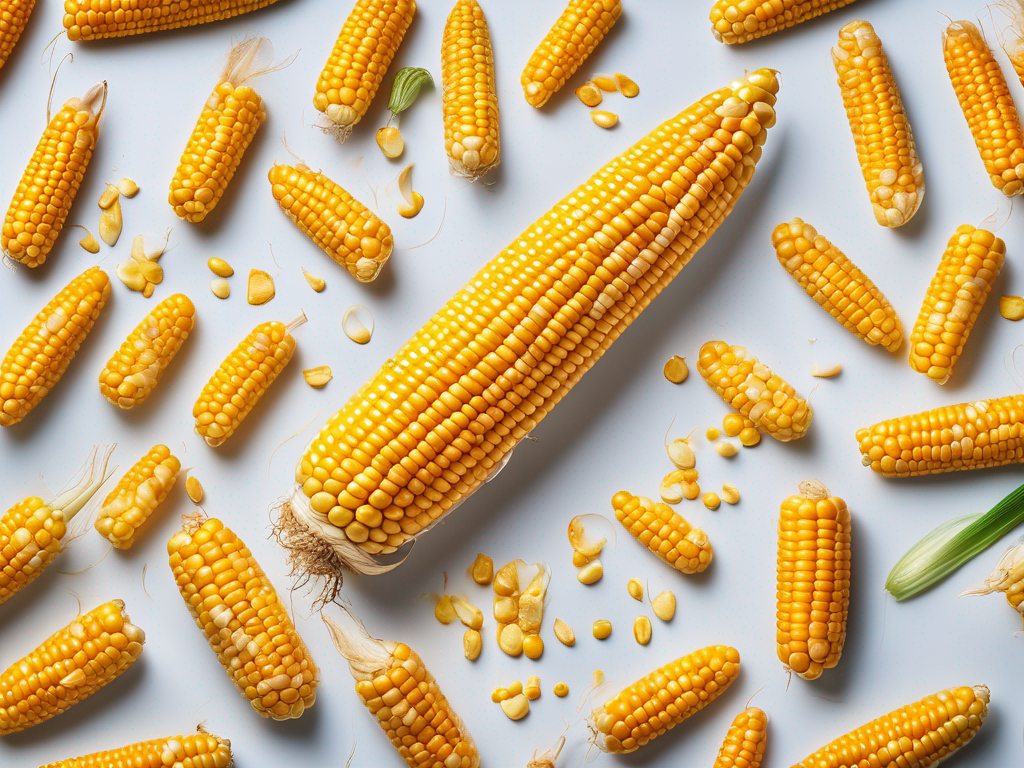
Is it Safe to Use Expired Corn Starch?
Get Your Free Food Safety Cheat Sheet
30 most common foods with instant answers. Print it and stick it on your fridge—completely free!
Is it Safe to Use Expired Corn Starch?
When it comes to cooking and baking, many of us rely on pantry staples like corn starch to thicken sauces, soups, and desserts. But what happens when you reach for that box of corn starch and notice it's past its expiration date? Is it still safe to use? In this blog post, we will explore the safety of using expired corn starch, practical tips for storage, and how to determine if your corn starch is still good to use. (Corn)
Understanding Expiration Dates on Corn Starch
Corn starch, a common ingredient derived from corn kernels, typically comes with a "best by" or expiration date on the packaging. This date indicates the manufacturer's recommendation for the product's peak quality. It's important to note that an expiration date is not a strict deadline but rather a guideline for freshness and flavor.
Factors Affecting Corn Starch Shelf Life
Several factors can impact the shelf life of corn starch, including:
- Storage conditions: Proper storage is crucial for maintaining the quality of corn starch. Exposure to heat, moisture, or light can degrade the product more quickly.
- Packaging: Airtight packaging helps prevent moisture and contaminants from affecting the corn starch.
- Contamination: Cross-contamination from using dirty utensils or exposing the corn starch to other food products can reduce its shelf life.
Can You Use Expired Corn Starch?
Visual Inspection
One way to determine if your corn starch is still usable is to conduct a visual inspection:
- Color and texture: Fresh corn starch is typically bright white and powdery. If you notice any discoloration, clumping, or an off smell, it's best to discard the product.
- Presence of pests: Check for any signs of pests or insects in the packaging, which may indicate spoilage.
Smell Test
Another method to assess the freshness of corn starch is to use your sense of smell:
- Fresh aroma: Good corn starch should have a neutral, slightly sweet smell. If it smells musty, rancid, or off-putting, it's advisable to throw it away.
Texture Test
The texture of corn starch can also provide clues about its usability:
- Clumping: If the corn starch has formed lumps or clumps, it may have absorbed moisture and is no longer suitable for use.
- Powdery consistency: Fresh corn starch should feel soft and powdery to the touch. If it feels sticky or grainy, it's best to discard it.
Proper Storage Tips for Corn Starch
To extend the shelf life of your corn starch and maintain its quality, consider the following storage tips:
- Store in a cool, dry place: Keep corn starch in a cool, dry pantry away from heat sources and sunlight.
- Seal tightly: Ensure the packaging is tightly sealed to prevent moisture from entering.
- Avoid contamination: Use clean utensils when scooping out corn starch to prevent cross-contamination.
- Consider transferring to airtight containers: If the original packaging is not resealable, consider transferring the corn starch to airtight containers for better protection.
Conclusion
In conclusion, while it's always best to use corn starch before its expiration date for optimal quality, using expired corn starch may still be safe under certain conditions. Conducting visual, smell, and texture tests can help you determine if the corn starch is still usable. Proper storage practices are key to maintaining the quality and safety of your corn starch. Remember, when in doubt, it's safer to discard the product than risk foodborne illness. Stay informed, stay safe, and enjoy cooking with confidence! (Corn)
Related Posts
Here are some other articles you might find helpful:
Authoritative Food Safety References
These agencies and university labs inform every tip and health precaution we publish.
USDA FoodKeeper – Cold Storage Guidelines
Official refrigerator, freezer, and pantry timelines maintained by the U.S. Department of Agriculture.
Visit USDA FoodKeeperFDA Produce Safety Rule & Grower Guidance
Field-to-fridge handling practices that prevent contamination of fruits, vegetables, and leafy greens.
Visit FDA Produce SafetyCDC Foodborne Illness Prevention Hub
Surveillance-backed guidance on pathogens, symptoms, and steps to reduce foodborne illness risk.
Visit CDC Food SafetyUC Davis Postharvest Technology Center
University research detailing optimal storage atmospheres for produce after harvest.
Visit UC Davis PostharvestPenn State Extension – Home Food Preservation & Safety
Peer-reviewed extension bulletins on safe canning, chilling, and reheating practices.
Visit Penn State ExtensionGet Your Free Food Safety Cheat Sheet
30 most common foods with instant answers. Print it and stick it on your fridge—completely free! Want more? Upgrade to the complete guide with 70+ foods.
Scan your food directly and get instant safety info using our AI-powered camera feature.